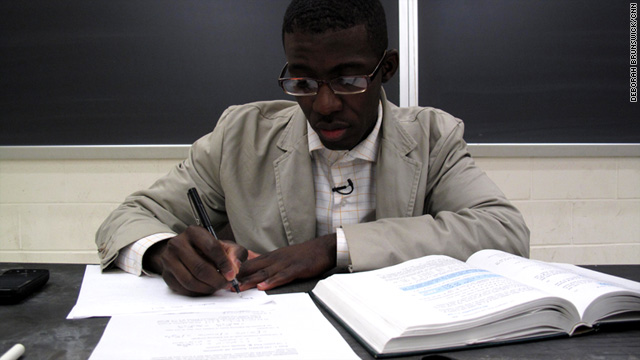Scammer
Banned

Painting -- simple painting -- caused Samten Dakpa to become a victim of terror.
For painting classic Tibetan images as a teenager, Dakpa says, Chinese police -- intent on suppressing Tibetan culture -- arrested, beat and tortured him, shoving his hands into a coal-burning oven.
"It was like a barbecue," he said, describing the painful burns on his hands.
Cheikhna Mahawa of Mauritania says he was arrested and tortured because he organized protests to improve education for the poor and lobbied for instruction of classic Arabic rather than the local Hassaniya dialect.
Police, Mahawa says, shoved a rifle butt into his mouth, forced him to stare at the sun and beat him when he was unable to keep a cockroach within a small circle, using a stick.
Aside from their victimization, what the two men share is a story of recovery made possible by the Bellevue Hospital Center-New York University program for survivors of torture, which provides care for victims from around the world, regardless of ability to pay.
"The individuals who come to us are among the most traumatized and brutalized individuals there are," said Dr. Allen Keller, who founded the program in 1995. "But they also come to us with incredible resilience, and we have the opportunity to help them heal."
Dakpa escaped from police custody, crossed the border into Nepal and then to India before finally arriving in the United States in 2003, a dozen years after his torture.
"When Sampten first came to us, he was in excruciating pain, both physically and emotionally. He could barely use his hands," Keller said. "He would try to paint and he could barely hold a paint brush. When he did, he would get terrifying memories of the torture he endured."
Doctors operated on Dakpa's right hand, allowing him to hold a paint brush without pain for the first time in years. His left hand, badly scarred, still has limited mobility.
"Just these two fingers are stuck here and I cannot open more than this," Dakpa said as he tried to stretch his palm. "Middle finger, if I try to open strongly, it hurts a lot."
So, this spring, surgeons plan to operate on the left hand.
Dakpa said he had nightmares in which he was being chased along an icy river. The ice would crack and he would fall into the freezing water. Therapists helped him deal with the trauma and today, Dakpa said, he hardly has any nightmares.
Mahawa has received treatment for his jaw and persistent back pain as well as psychological counseling.
The Bellevue-NYU program does more than provide medical care. It connects patients with free legal assistance. Many, like Dakpa and Mahawa, are able to gain asylum status. Social workers also aid with English lessons, connections for employment and housing.
The Survivors of Torture program, in a cramped, somewhat decrepit corridor of Bellevue Hospital, is like an international refugee center. On a recent morning, a patient from Cameroon was reunited with her two daughters, who had just arrived in the United States. Other patients patiently waited in the hallway to meet with therapists and social workers.
During its 15 years, the program has treated nearly 3,000 survivors, Keller said. "We're able to help them heal, help them to function and get on with their lives, and that's really gratifying."
Samten Dakpa is delighted and grateful to earn a living by creating art -- without pain.
"I'm feeling really relaxed when I paint. It's very meditational," said the torture survivor.
Cheikhna Mahawa, meanwhile, feels victorious over his former captors as he teaches calculus and linear algebra at City College of New York while he pursues his doctorate.
"Absolutely. Without a doubt," Mahawa said when asked if it's worth fighting for education, even to the point of becoming a victim of torture.
"What is living without wisdom?" he asks. "What is living without knowledge?"
